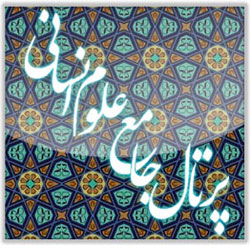Reviving Iran’s Heritage: The Role of Modern Materials in the Conservation of Historic Structures
Keywords:
Iranian heritage, historical conservation, fiber-reinforced polymers (FRP), geopolymer adhesives, fabric-reinforced mortars (TRM)Abstract
The integration of modern engineered materials into the conservation of Iran’s earthquake-prone and culturally rich historic structures has accelerated over the past decade. This article systematically reviews global and Iranian case studies to evaluate the compatibility, durability, and authenticity of advanced composites (e.g., carbon and glass Fiber-Reinforced Polymers [FRP]), Textile Reinforced Mortars (TRM), geopolymer adhesives, and nano-reinforcing materials. Using a PRISMA-inspired methodology, over 80 peer-reviewed sources were examined, of which 51 key studies were analyzed in-depth. Quantitative synthesis indicates that FRP wrapping can increase the in-plane shear strength of unreinforced masonry walls by up to 88% and ductility by 38%, whereas lime mortars reinforced with basalt fibers retain 95–98% of the masonry’s original breathability. Geopolymer grouts formulated with locally sourced volcanic pumice achieve compressive strengths of 12 to 15 MPa and water absorption rates below 20%, demonstrating excellent compatibility with historic stone substrates. However, the improper use of cementitious or impermeable coatings has resulted in irreversible moisture entrapment and façade damage at several Iranian heritage sites. We conclude that a balanced mechanical approach—prioritizing chemical and hygrothermal compatibility—enables effective deployment of modern materials while preserving authenticity. Practical guidelines and educational strategies are proposed for Iranian heritage professionals to ensure sustainable and minimally invasive interventions.
Downloads
References
1. Loke ME, Kumar P, Cultrone G. Suitable historic repair mortars. International Journal of Conservation Science. 2023;14(3):783-802.
2. Hao Y, Yao Z, Wu R, Bao Y. Damage and restoration technology of historic buildings of brick and wood structures: a review. Heritage Science. 2024;12(1):301.
3. Azouqah H, Alomar N, Kaadan L, Sonbul M, Abdulaziz H, Labib W. Sustainable Local Materials: A Study of Adobe Bricks in Saudi Arabia. Materials Science Forum. 2021;1047:163-73.
4. Hosamo H, Coelho GBA, Buvik E, Drissi S, Kraniotis D. Building sustainability through a novel exploration of dynamic LCA uncertainty: Overview and state of the art. Building and Environment. 2024;264:111922.
5. Ige OE, Duffy KJ, Olanrewaju OA, Collins OC. An Integrated System Dynamics Model and Life Cycle Assessment for Cement Production in South Africa. Atmosphere. 2022;13:1788.
6. Ebrahimzadeh S, Nasrollahzadeh K. Experimental study on performance of repaired and strengthened unreinforced masonry walls using polypropylene bands. Scientia Iranica. 2023;30(3):918-35.
7. Campos HF, Klein NS, Marques Filho J, Bianchini M. Low-cement high-strength concrete with partial replacement of Portland cement with stone powder and silica fume designed by particle packing optimization. Journal of Cleaner Production. 2020;261:121228.
8. Arrigoni A, Opher T, Spatari S, Arosio V, MacLean HL, Panesar DK, et al., editors. Environmental impacts of using desalinated water in concrete production in areas affected by freshwater scarcity. Acta Polytechnica CTU Proceedings; 2022.
9. Chamizo S, Adessi A, Mugnai G, Simiani A, De Philippis R. Soil type and cyanobacteria species influence the macromolecular and chemical characteristics of the polysaccharidic matrix in induced biocrusts. Microbial Ecology. 2019;78(2):482-93.
10. Mercuri M, Pathirage M, Gregori A, Cusatis G. Masonry vaulted structures under spreading supports: Analyses of fracturing behavior and size effect. Journal of Building Engineering. 2022;45:103396.
11. Rezaeifar O, Younesi A, Gholhaki M. Seismic retrofit of a historical building in Tehran University Museum using FRP technology and steel jacketing. Journal of Rehabilitation in Civil Engineering. 2016;4(1):41-54.
Downloads
Published
Submitted
Revised
Accepted
Issue
Section
License
Copyright (c) 2025 سارا سادات تقوی دهاقانی, حمیده جعفری, ناصر پورسعید, کیومرث احمدی (نویسنده)

This work is licensed under a Creative Commons Attribution-NonCommercial 4.0 International License.









